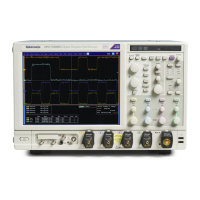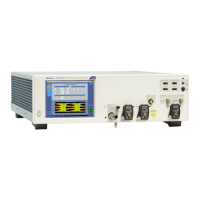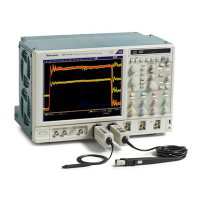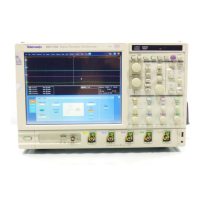Oscilloscope Reference Measurement variables
End. is the location of the end of the measurement zone (X-value). It is (RecordLength –1.0)samples
unless you are making a gated measurement. When you use gated measurements, it is the location of
the right vert
ical cursor.
Hysteresis. is the hysteresis band 10% of the waveform amplitude. It is used in MCross1, MCross2,and
MCross3 calculations.
For example, once a crossing has been measured in a negative direction, the waveform data must fall
below 10% of the amplitude from the MidRef point before the measurement system is armed and ready for
a positive crossing. Similarly, after a positive MidRef crossing, waveform data must go above 10% of the
amplitude before a negative crossing can be measured. Hysteresis is useful when you are measuring noisy
signals, because it allows the oscilloscope to ignore minor fluctuations in the signal.
MCross calculations
MCross1, MCross2, and MCross3. refer to the first, second, and third MidRef cross times, respectively.
The polarity of the crossings does not matter for these variables, but the crossings alternate in polarity;
that is, MCross1 could be a positive or negative crossing, but if MCross1 is a positive crossing, MCross2
will be a negative crossing.
MCross Calculations
The instrument calculates these values as follows:
1. Find the first MidRefCrossing in the waveform record o r the gated region. This is MCross1.
2. Continuing from MCross1, fi nd the next MidRefCrossing in the waveform record (or the g ated re gion
)
of the opposite polarity of MCross1.ThisisMCross2.
3. Continuing from MCross2, find the next MidRefCrossing in the waveform record (or the gated region)
ofthesamepolarityasMCross1. ThisisMCross3.
MCross1Polarity. is the polarity of first crossing (no default). It can be rising or falling.
StartCycle. is the starting time for cycle measurements. It is a floating-point number with values between
0.0 and (Record Length – 1.0), inclusive.
728 DSA/DPO70000D, MSO/DPO/DSA70000C, DPO7000C, and MSO/DPO5000 Series

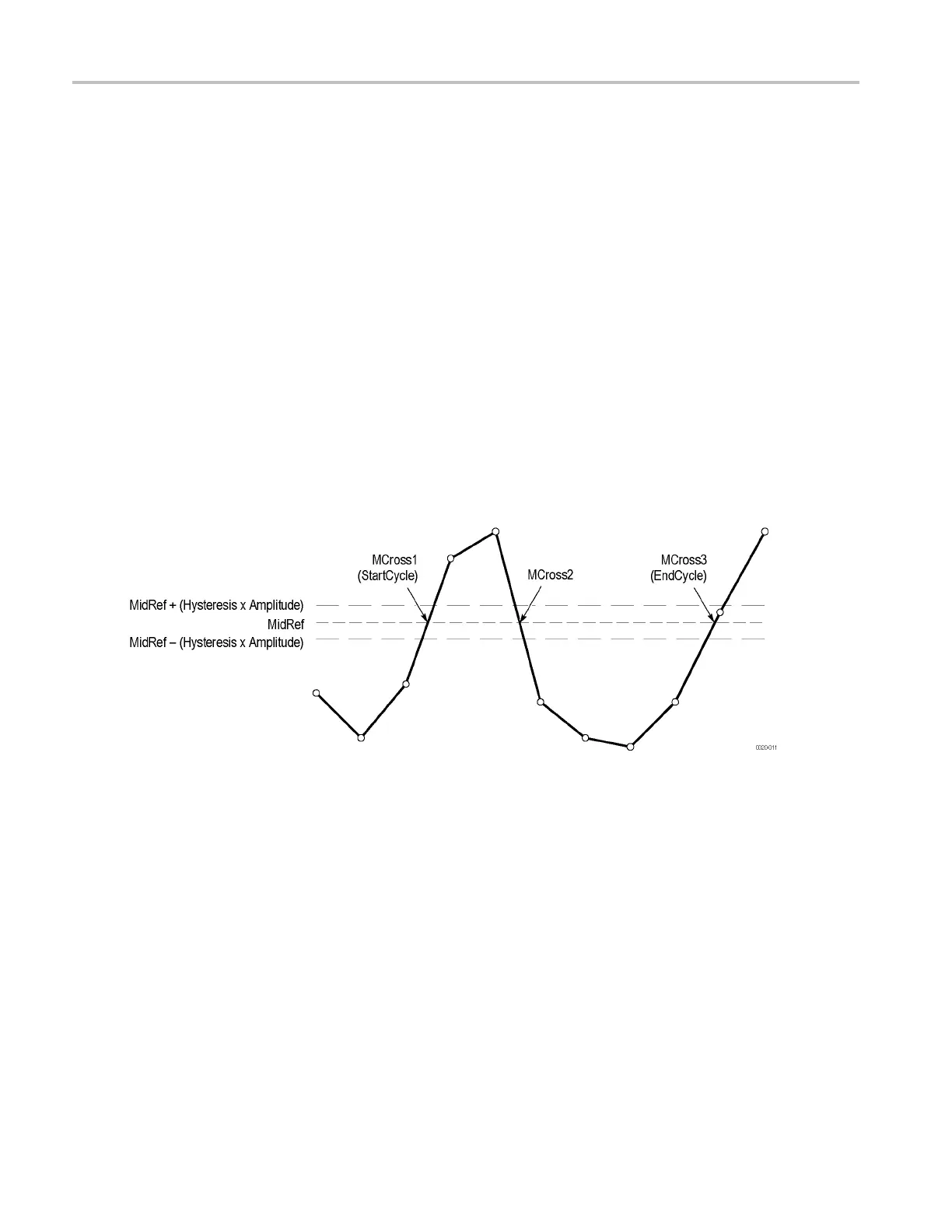